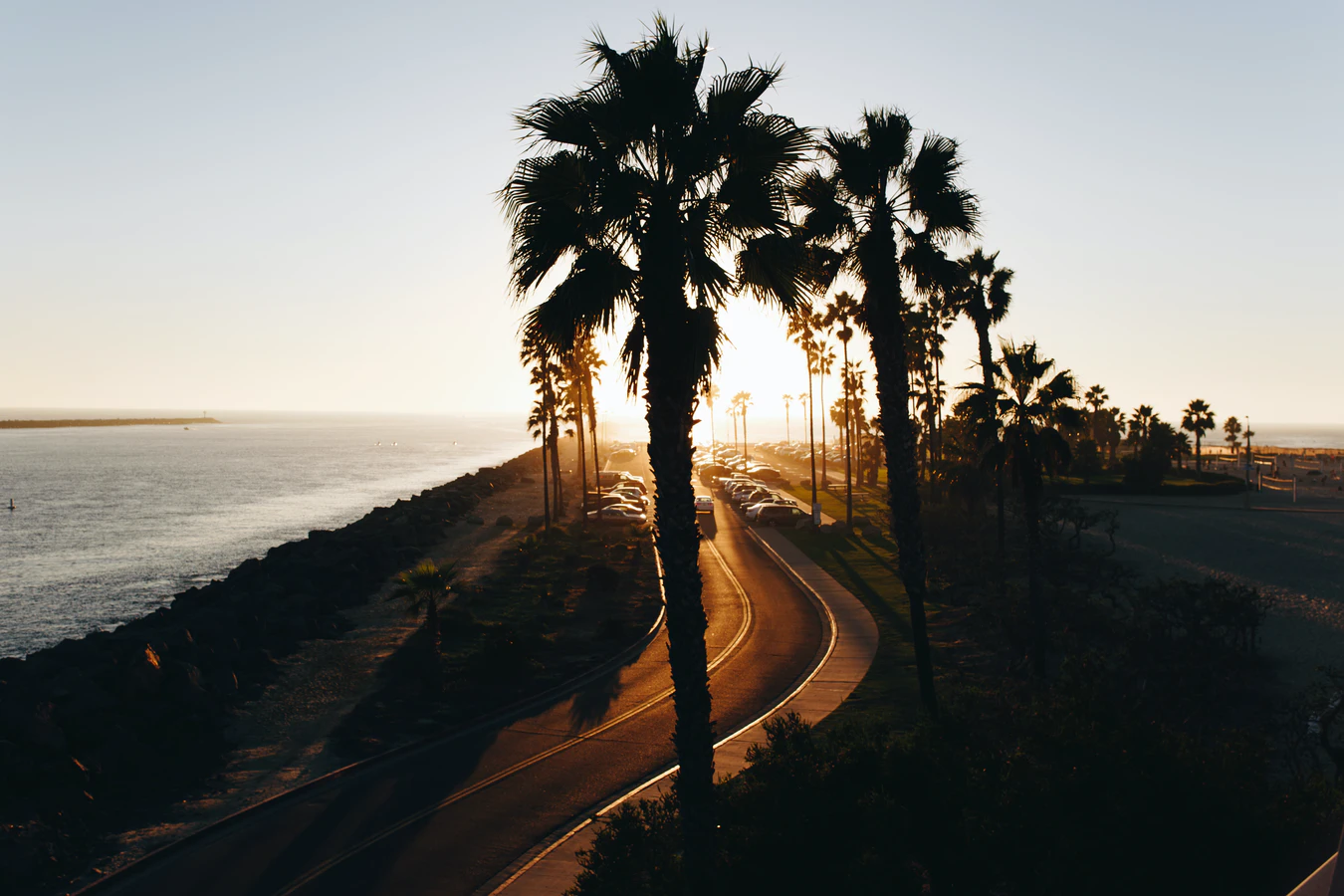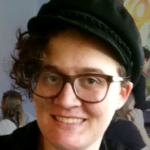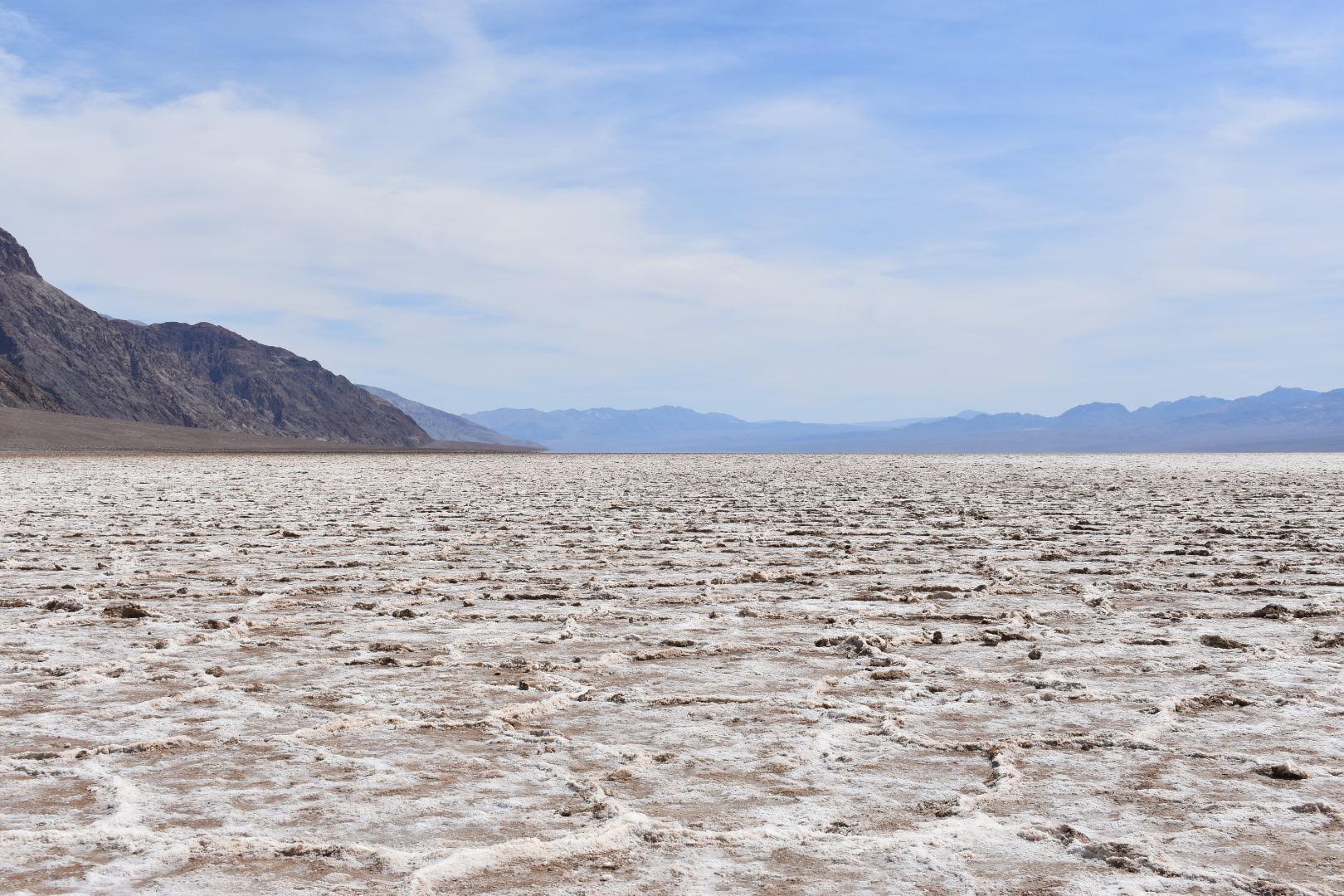In this post, I want to take you on a journey back in time to a destination where the pace is slower and the crowds are thinner, where wine tasting is still relatively inexpensive (and, sometimes, even free!) and where the person pouring your wine is likely to be either the winemaker or an owner. Lying just north of Napa Valley and Sonoma County, Anderson Valley in Mendocino County is probably our favorite destination for Pinot Noir and Alsatian varietals and if you haven’t been, I’d recommend planning a visit sooner rather than later. While attracting less than 22% of Sonoma County’s travel-related spending in 2018, the year-over-year percentage increase in revenue from tourism exceeded that of both Sonoma and Napa counties.
The 8 stops in this post are arranged from west to east on Highway 128 which bisects Anderson Valley, working one’s way back to the town of Cloverdale, at the northern end of Sonoma County. The distance between the first stop to the last is a mere 12 miles! This is where Boontling, one of only two homegrown languages remaining in the U.S. and now nearly extinct, was developed in the 19th century to gossip covertly.
Tip: Schedule your visit around one of the 5 annual events sponsored by the Anderson Valley Winegrowers’ Association. A 2-day ticket to one of these events, purchased in advance, costs less than a single tasting at almost any winery in Napa Valley!
Lula Cellars

If the Emmy Award-winning sitcom Cheers had been set in a tasting room instead of a Boston bar, this boutique winery in the storied “Deep End” (Boontling for “the north end”) of Anderson Valley would have been a prime candidate for the honor. We never tire of being served, educated, and entertained – not necessarily in that order – by Dan Reed, Tasting Room Manager, who has a deliciously dry (like their wines) sense of humor.
Lula Cellars is best known for its Pinot Noir program; all the 2018 vintages currently being poured won gold medals and received scores of 93 points or higher from Wine Enthusiast. But other offerings stand out as well. Their Gewürztraminer is our “go-to” Thanksgiving wine (whenever it’s available) and fruit from a 45-year-old Beaujolais Pinot Noir clone is used to make their double gold/Best in Show Rose. Founder and original winemaker Jeff Hansen sold his interest in Lula Cellars to his friend and co-owner, Ken Avery, in 2017, and Matt Parish, who has an impressive pedigree in winemaking as well as his own label, was brought on as winemaker. It will be interesting to follow the direction Lula Cellars’ portfolio of wines takes under Matt’s guidance. Tasting fee: $10.
Navarro Vineyards and Winery
Turn left after driving just 2.6 miles east on Highway 128 into Navarro Vineyards and Winery’s generous parking lot and picnic area. Again, the backbone of Navarro’s production is Pinot Noir, but this is one of the few places one can find Edelzwicker, a wine with a German name from the Alsace region in France. Its name comes directly from the Alsace dialect for “edel” (meaning “noble”) and “zwicker” (meaning “mixture” or “blend”). Navarro’s current bottling of Edelzwicker (a steal at $19.50) is 40% Pinot Gris, 32% Gewürztraminer and 28% Riesling – all considered “noble” varietals in Alsace. Tasting here is free!
Gowan’s Heirloom Cider
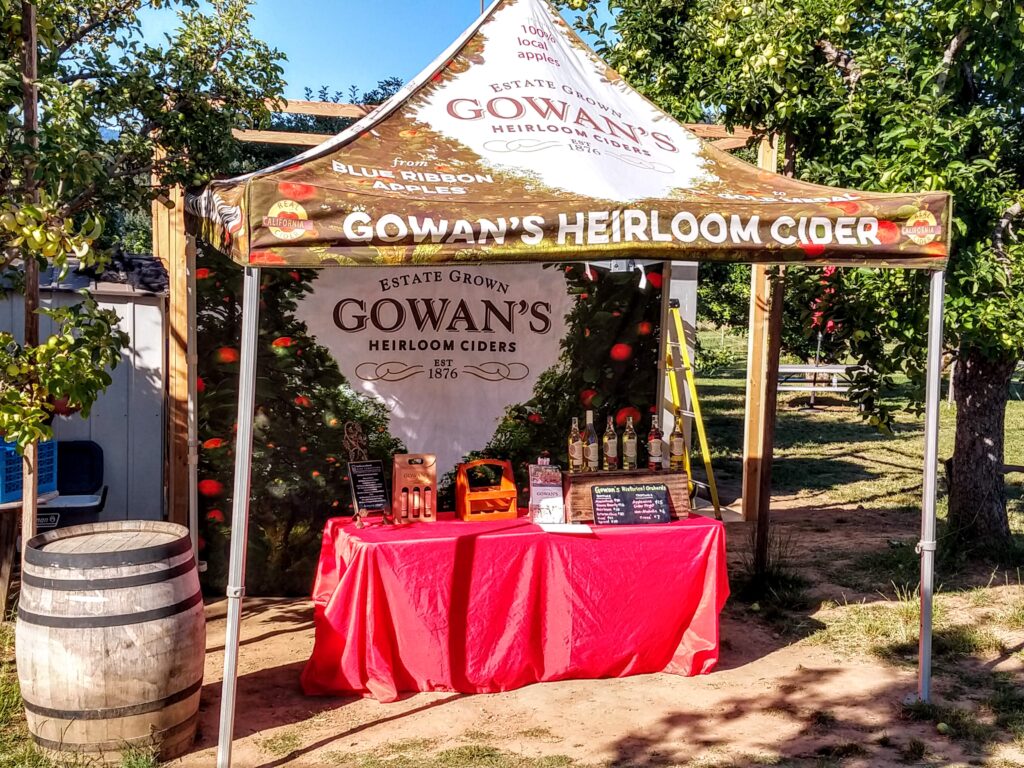
I can’t tell you how many times I’ve driven right past Gowan’s Heirloom Cider because (as you can see from the photo) it looks like a roadside fruit stand (which it sort of is) on my way to Lula Cellars. What a mistake! Do yourself a favor and turn into their gravel parking area; you’ll be in for a treat. The term “heirloom apples” generally refers to varieties whose origins predate the refrigerated boxcar. The Gowan family has been growing heirloom apples (84 varieties) on this farm, surrounded by redwoods and live oak trees, since 1875. There’s a “magic garden” vibe here; where else can you sit in the shade of a tree in a 145-year-old orchard and taste cider made from apples produced by trees of that heirloom variety?
The Sierra Beauty, considered by many to be the very best baking apple, was thought to be extinct until it was “discovered” in the Gowan family orchard where it had been growing since 1906. 6th generation Sharon Gowan is a marketing genius who, in 2014, led the committee that established the inaugural California Cider Competition. During our recent visit, her husband was building a cider bar where visitors will be able to taste their hard ciders (5.7% – 7.4% alcohol by volume – most still wines are twice that), non-alcoholic juices, cider slushies and even cider cocktails. Tip: Schedule your visit with Sharon and request to do a pairing of the 6 ciders they bottle with sweet and savory small bites – amazing, simply amazing! Tasting fee: $15.
Toulouse Vineyards
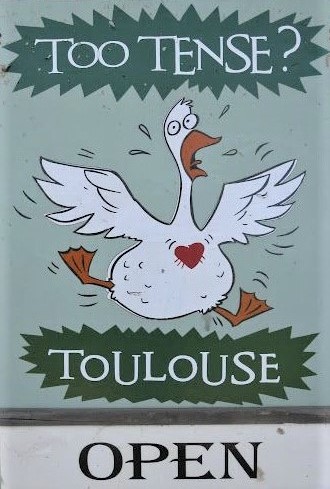
When I first discovered Toulouse Vineyards, I assumed the name was an homage to the Post-Impressionist French artist, Henri de Toulouse-Latrec, famous for his posters of the Moulin Rouge in Montmarte, Paris. Wrong; another example of how dangerous it is to make assumptions! As it turns out, the name is a fortunate accident that has led to many humorous adaptations like the entry sign pictured here. Owners Vern and Maxine Boltz wanted to use an animal on their label as Duckhorn Vineyards and Frog’s Leap Winery had done. They came across the Toulouse goose, a French breed, and their cousin Ben hand-drew the image for the winery’s label. A stuffed Toulouse goose is displayed in the tasting room.
There are 2 covered tasting patios at Toulouse Vineyards (by appointment only, call 707.895.2828) – perfect for tasting in the COVID era. The view from the rear deck overlooking Anderson Valley is ethereal – as are their wines! Again, this is a Pinot Noir “house” with 6 different labels available for purchase ($32 – $55) but also worthy of note is their dry Riesling ($24), Gewürztraminer ($24), and Valdiguié, often called Napa Gamay in California ($32), a perfect picnic wine. Their club gives a generous 25% discount with as little as a 12 bottle/year commitment. We joined their “Mixed Gosling” club since we were as impressed with their Alsatian varietals as we were with their Pinot Noir and Valdiguié.
Domaine Anderson
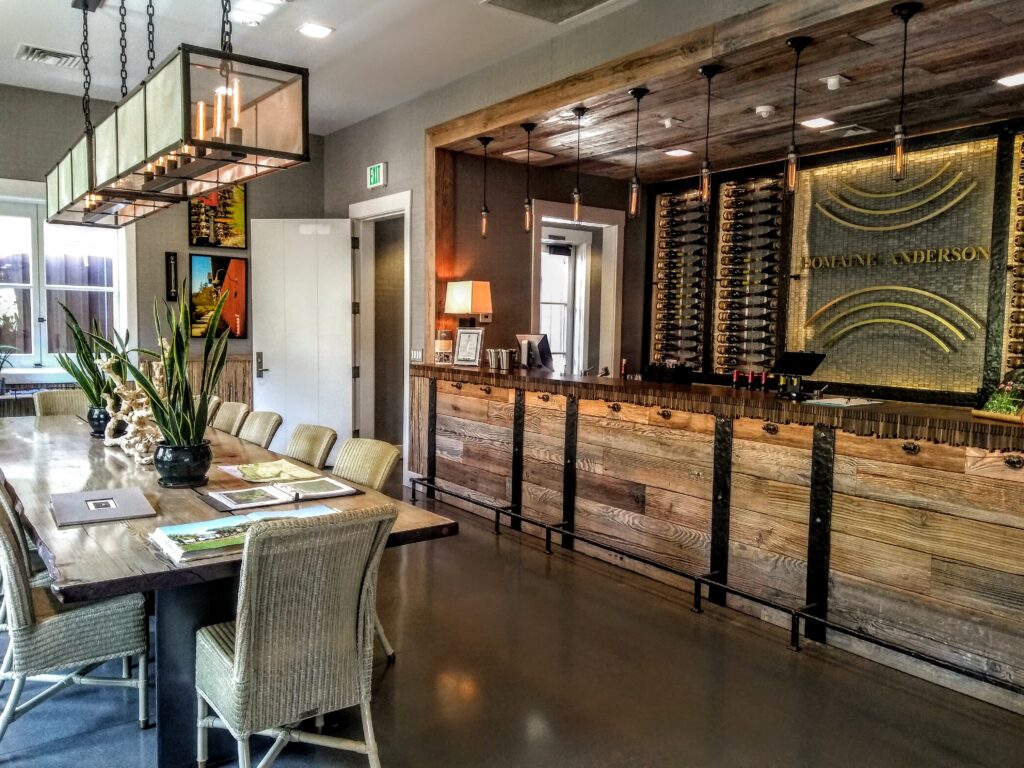
Referring to the Model T in his 1922 autobiography, My Life and Work, Henry Ford wrote, “Any customer can have a car painted any color that he wants so long as it is black.” At Domaine Anderson, any customer can taste any wine s/he wants as long as it’s either Chardonnay or Pinot Noir. This laser-sharp focus results in some exquisite wines, a common denominator among the family-owned wineries belonging to the Champagne house, Louis Roederer, which put Anderson Valley on the map almost 40 years ago. Today, one can visit 3 of these wineries in the space of just 6 miles on Highway 128 in Anderson Valley: Roederer Estate and Scharffenberger Cellars (both of which produce sparkling wine exclusively) in addition to Domaine Anderson (which makes still wines). The latest addition to the Roederer family of wineries is Merry Edwards Winery in Sonoma County, legendary for its – you guessed it – Pinot Noir. Tasting fee: $10 (sampling of current releases) or $15 (focus on single-vineyard labels of Chardonnay and Pinot Noir).
Lichen Estate
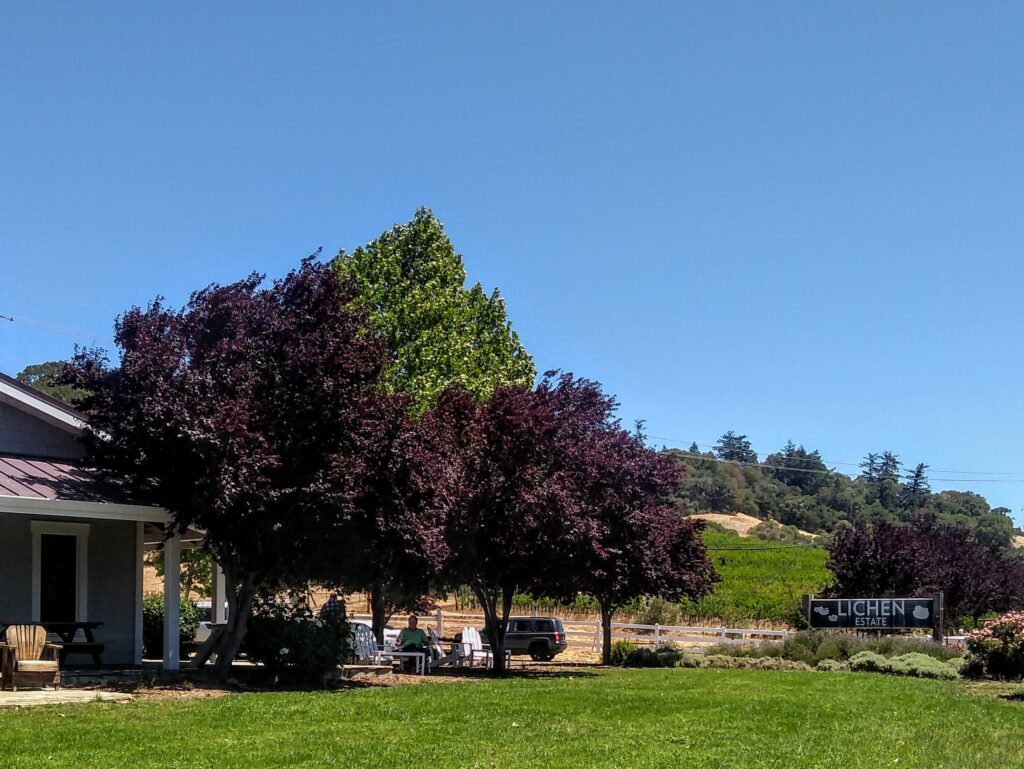
In one sense, Lichen Estate, which had its first release in 2014, is among Anderson Valley’s newer wineries. In reality, its story as a vineyard goes back 14 years earlier, when owners and winegrowers Doug and Ana Stewart purchased what, for 150 years, had been a 203-acre sheep ranch. The Stewarts made a name for themselves under the Breggo Cellars label, but eventually sold the brand and leased the winery building to Napa Valley’s Cliff Lede Vineyards for 5 years. They retained ownership of the land, however, and when the winery lease ended in 2014, Doug and Ana were ready with their first bottling under a new label. They chose the name Lichen Estate as an homage to the property itself, recalling how, after the oaks that dotted the landscape of the sheep ranch dropped their leaves each winter, the only color visible was the green-gray lichen on their trunks.
Lichen Estate is an all organic, Pinot-only house. It uses 100% estate-grown Pinot Noir and Pinot Gris (an Alsatian mutation of Pinot Noir) to make both still and sparkling wines. Pre-COVID, tasting took place in a fairly tiny room in the winery building; COVID spacing standards have actually resulted in a more relaxed tasting experience seated in Adirondack chairs scattered around the front lawn or on the covered patio in inclement weather. Every wine is excellent but two are unique. Les Pinots Noir and Gris, which is a still blend of both varietals picked at sparkling wine ripeness levels with the Pinot Noir fruit pressed off its skins early enough that it retains no color, presents as a white wine. And if you want to stump your friends in a blind tasting, Lichen Estate makes a white Pinot Noir with white wine aromatics and a mouthfeel of a Pinot Noir. The Gourmet Insider calls it “the wine you didn’t know you needed.” Tasting fee: $15.
Disco Ranch
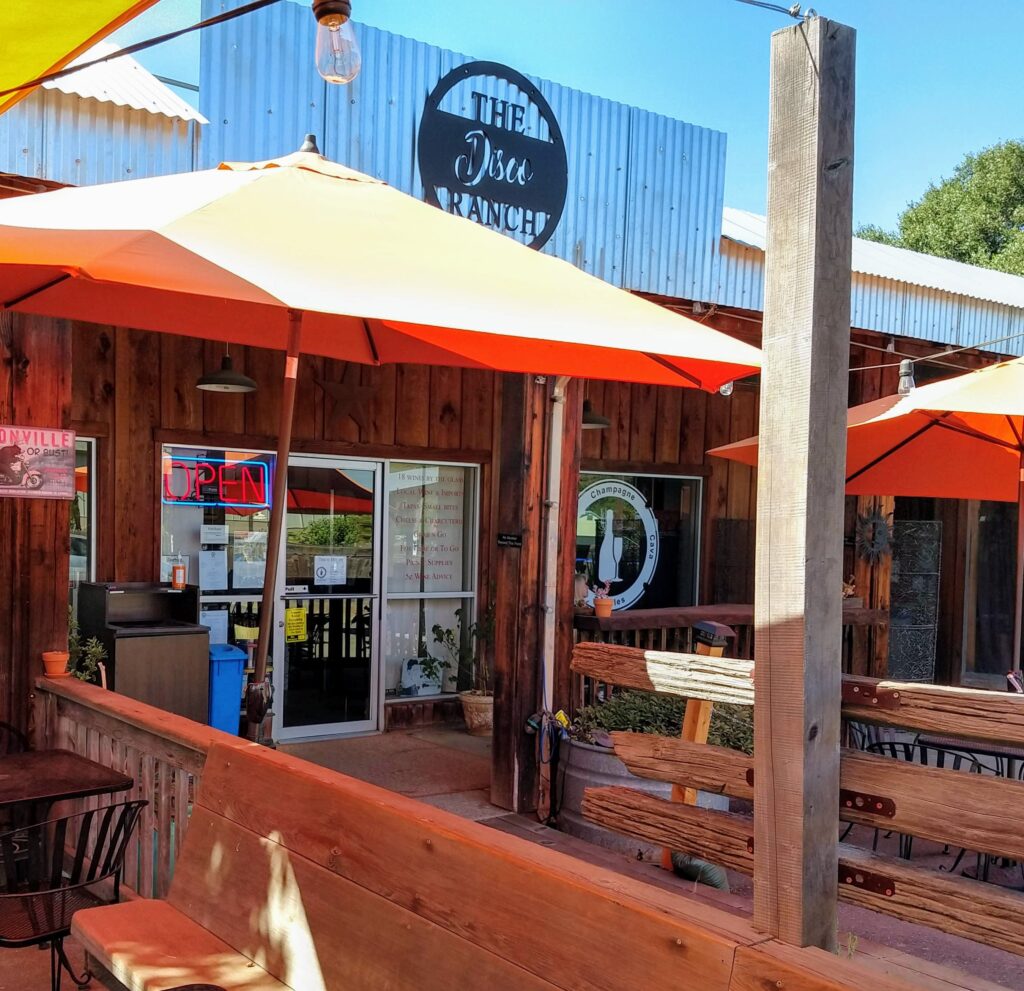
How can one building have had two such interesting names? Before its current incarnation, 14025 Highway 128 in Boonville had been the Horn of Zeese (“cup of coffee” in Boontling) Café for many years. Now, under the deft hand of Wendy Lamer, it has been transformed into the Wine Spectator Award of Excellence winner Disco Ranch: a wine/tapas bar, specialty foods market, wine shop, and source for expert wine/food pairing guidance all rolled into one! Before coming to Anderson Valley, Wendy lived on a farm in Georgia where llamas roamed the front yard. There, she and a group of neighbors took turns hosting wine and dinner parties in their relatively palatial homes. When it finally became Wendy’s turn to host, the furniture got pushed back, the music turned to tunes from the ‘70s, dancing continued long into the night, a disco ball got involved and the name “Disco Ranch” was born!
With over 30 years of fine wine and specialty food experience, the “secret sauce” at Disco Ranch is Wendy herself. She’s worked with Tim Hanni, one of the first U.S. Masters of Wine, who is an outspoken advocate of rethinking conventional wisdom when it comes to food and wine pairing. Wendy makes the tapas and curates the wines sold here. And wine runs in the family; her brother Gregg (see Domaine Anderson above) with whom owned a bistro/wine bar in Phoenix, designed the logo for Disco Ranch. There’s no pretense here; just a wine list that is 9 pages long, a food menu featuring items like “rocking shrimp” (5 for $3.50) and pulled chicken pesto sliders on Hawaiian rolls (2 for $5), and a knowledgeable, affable host.
Foursight Wines
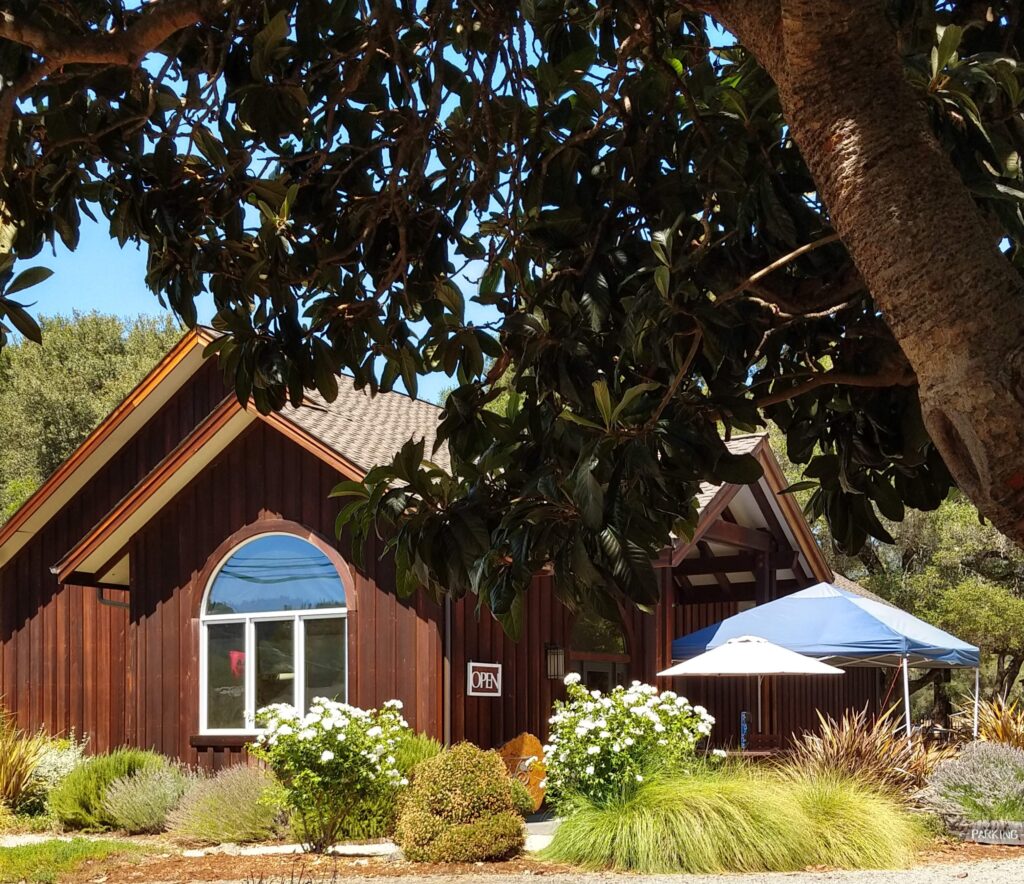
Continue just a half-mile east to Foursight Wines with the 7th-oldest tasting room in Anderson Valley. “Foursight” is a play on words, referring both to the number of generations that have farmed this property and the intent of the founders, their daughter (Kristy, who handles all the marketing), and her husband and winemaker (Joe) to be at the vanguard of Anderson Valley’s wine industry. And they are delivering on this intent – in a big way. Both Kristy and Joe have served as President of the Anderson Valley Winegrowers’ Association. I honestly don’t think I’ve ever met a more personable, knowledgeable winemaker or, as he calls himself, “Chef de Cave” (Chef of the Cave) than Joe – I could listen to him wax eloquent about wine all day long, especially if I had a glass of his wine in hand.
Pinot Noir accounts for about 78% of the fruit grown on the estate vineyard. We’ve never been able to leave here without a bottle of Joe’s Zero New Oak Pinot Noir which, as its name implies, is aged in neutral French Oak barrels to soften while allowing the fruit to be the star. The current vintage was rated a “Best Buy” by Wine & Spirits magazine. Sauvignon Blanc accounts for another 20% of the fruit grown on the estate and there’s a small parcel of Semillon – a rarity in Anderson Valley. The current release of Semillon scored 91 points in the May 2021 edition of Wine Enthusiast magazine. Foursight also offers 2 guesthouses: a 2 BR, 1 BA, 900 square foot house that sleeps 5 for $200/night and a vintage 3 BR, 2 BA farmhouse that sleeps 6 for $245/night. Both get 4.9 stars out of 5 reviews and either would make a great base for your stay in Anderson Valley.
Leaving Foursight Wines, you will continue driving southeast, climb 1,200 feet over a ridge on Highway 128, and drop into Cloverdale at the northern end of Sonoma County. From there it is 3 hours back to SFO or you can explore Sonoma County by turning south onto Highway 101. Tip: The guide at “Sonoma County for Oenophiles” will save you more than its purchase price if you’d like to extend your visit. WINEtineraries can suggest itineraries based on your wine preferences, interests, and price sensitivity.


